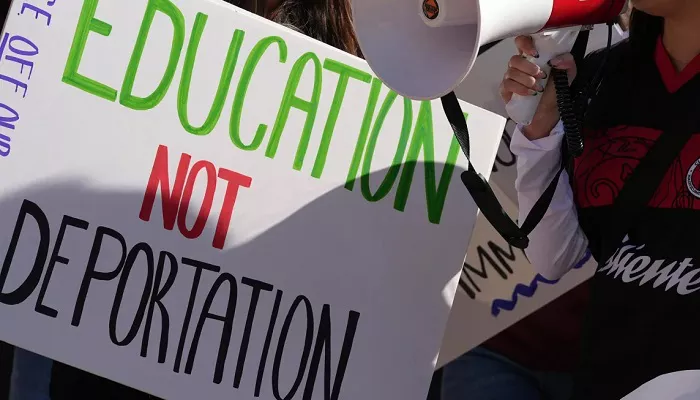The Trump administration has been compelled to disclose details of a controversial and legally questionable operation that sought to terminate the immigration records of thousands of international students—an initiative a federal judge sharply criticized as a clear violation of due process.
During a court hearing on Tuesday, Department of Homeland Security (DHS) official Andre Watson revealed that the administration relied on the National Crime Information Center (NCIC) database to identify students for potential visa revocation. The database, which logs individuals’ encounters with law enforcement, included minor offenses such as traffic citations, dismissed misdemeanor charges, and unprosecuted arrests—data that triggered the termination of many students’ immigration records.
Watson, a senior official in the National Security Division of Homeland Security Investigations, testified that a team of 10 to 20 personnel had screened the names of approximately 1.3 million international students. The only verification process involved matching names in the NCIC database with those in the Student and Exchange Visitor Information System (SEVIS), a federal platform used by schools to manage student visa compliance.
The operation prompted at least 100 affected students to file lawsuits in recent weeks. Judge Ana Reyes, who presided over the hearing, expressed deep concern over the administration’s actions, particularly after previous court sessions where the Justice Department failed to provide clear answers. At one point, an attorney admitted that U.S. Immigration and Customs Enforcement (ICE) had refused to disclose critical information.
Even after the administration announced on Friday that it would reinstate all affected SEVIS records, Reyes and other federal judges continued to investigate the rationale behind the mass terminations.
While the Justice Department argued that a SEVIS cancellation alone did not strip a student of legal status, schools interpreted the terminations as a directive to bar students from attending classes or continuing on-campus employment. This, in turn, placed students at risk of falling out of legal status and facing possible deportation. A DHS website even advised students whose SEVIS records were terminated to leave the U.S. immediately or seek reinstatement.
According to court records and internal emails, DHS initially flagged about 16,000 students through the database match. After further filtering, approximately 6,400 names were submitted to the State Department, which then began revoking visas based on its own review. DHS subsequently ordered SEVIS terminations for students with revoked visas as well as those simply flagged in the crime database.
Judge Reyes highlighted the rapid pace and lack of oversight in the process, noting that DHS issued termination orders for hundreds of students—including the case of Akshar Patel—just 15 minutes after receiving a list of flagged names. Patel, who was weeks away from graduating, had been included because of a reckless driving charge that had already been dismissed.
“You and I both know Mr. Patel is not a criminal,” Reyes told Watson in court, questioning the rationale of deporting immigrants for minor infractions such as speeding tickets.
Watson contended that the terminations were intended as investigatory flags for schools, not as punitive measures. However, he admitted under questioning that no effort had been made to communicate that purpose to educational institutions. Instead, the SEVIS system recorded the terminations using vague catch-all reasons, including having a criminal record or failing to maintain status.
Justice Department attorney Johnny Walker acknowledged that the language used to categorize the terminations was “not necessarily” appropriate and suggested a contractor might have been responsible, though he could not confirm whether any external party had been involved.
Judge Reyes concluded that the operation had not only disrupted the lives of international students but also left them burdened with legal fees as they sought to challenge the terminations in court.
“All of this could have been avoided,” Reyes remarked, had the administration exercised caution. “But that’s not what happened.”
Related topics:
- Liberals Projected to Form Government—Here’s What That Means for Canada’s Immigration Policy
- Could Australia See Another Immigration Amnesty?
- ICE Deports U.S. Citizen Child and Mother Amid Legal Controversies


